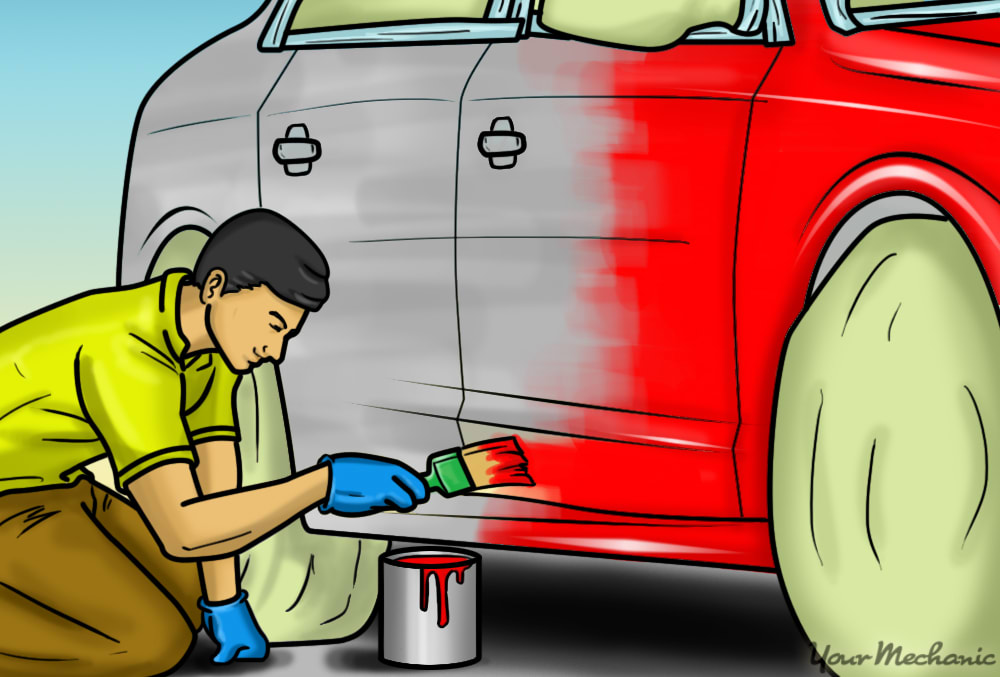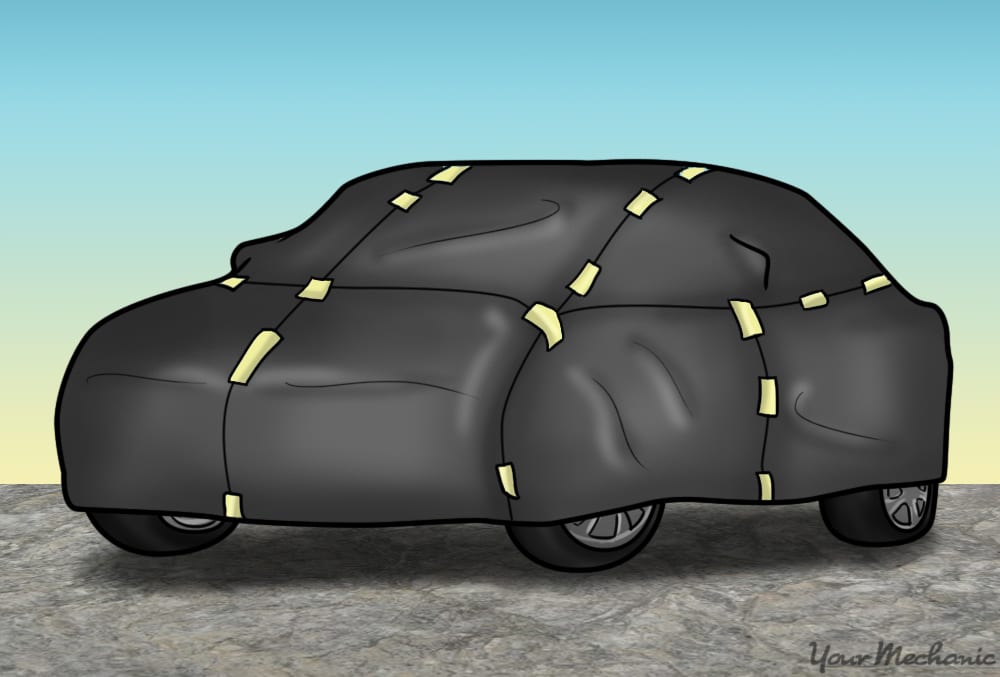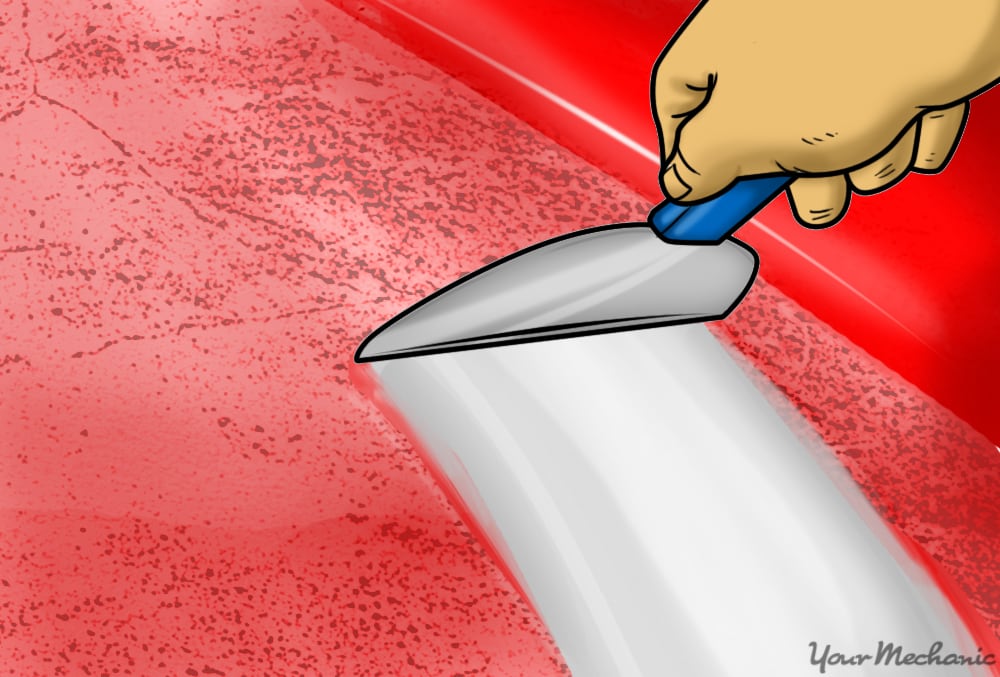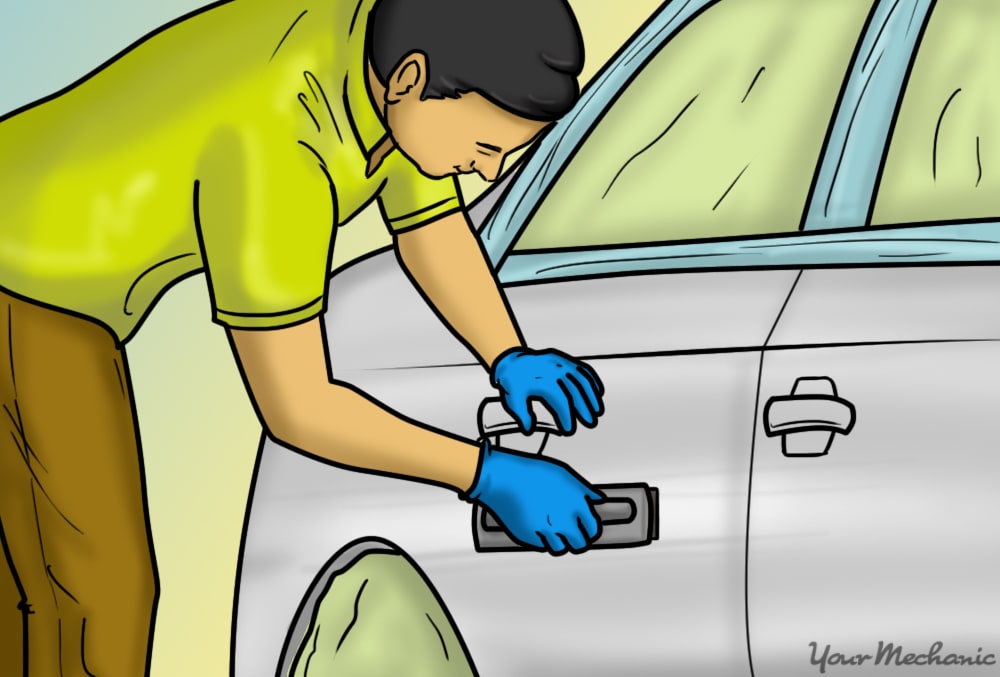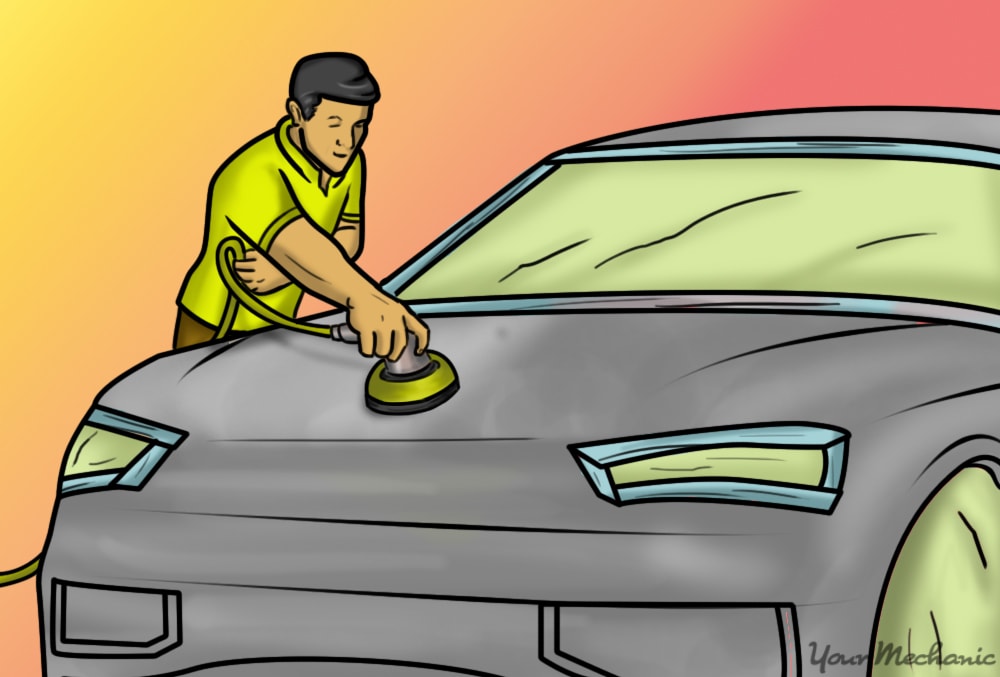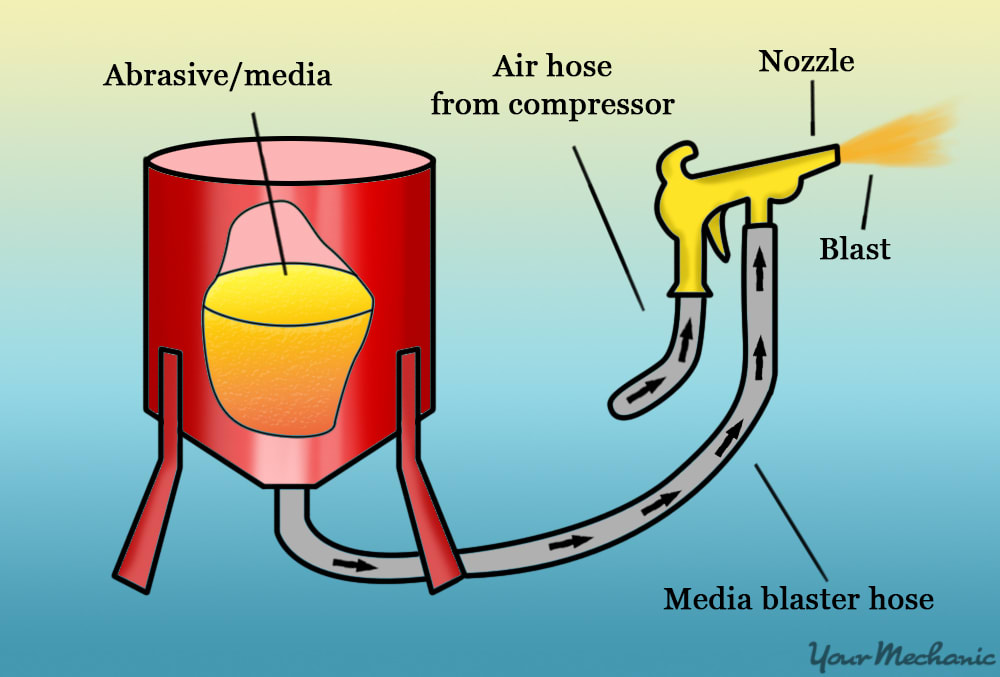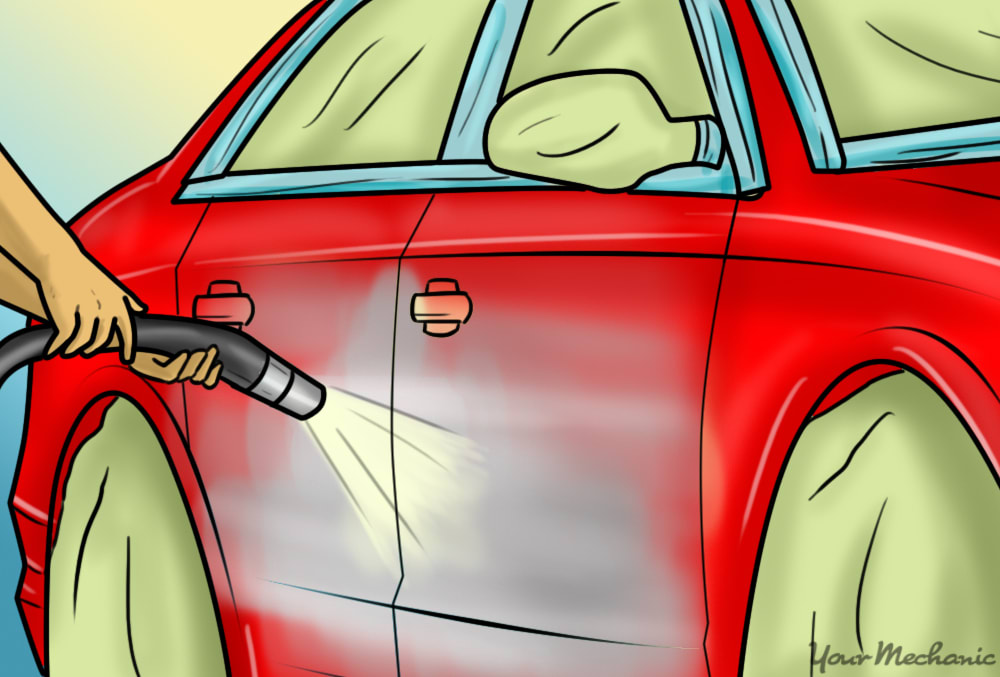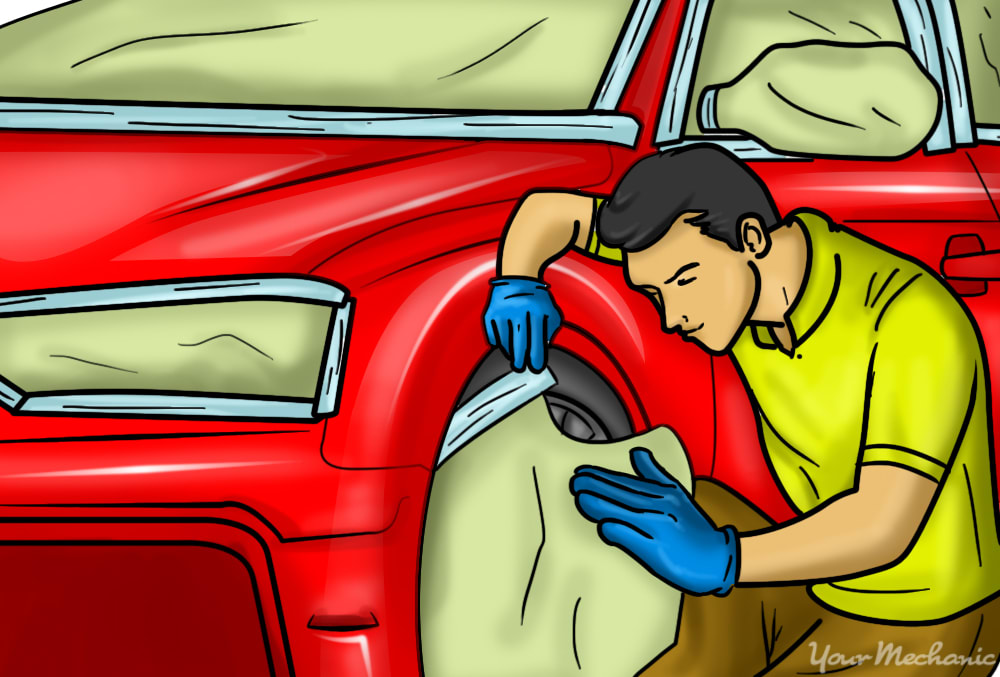

While you may be able to apply a new coat of paint to your car the way it is, stripping the old paint off first will yield better results. This task takes time and effort, and several options are available. Wear a face mask, goggles and gloves for all methods to protect yourself, and choose the one that seems simplest for you.
Method 1 of 3: Use a chemical stripper
Materials Needed
- Brush
- Chemical stripper
- Plastic putty knife
- Sandpaper (220 and 400 grit)
- Trash bags
- Water
- Wire wheel and drill
Step 1: Prep the car and work area. Put the car in a well-ventilated area and prep the area for the chemical stripping.
Lay down a drop cloth to collect all the chemical drip-off and the paint that flakes away.
Step 2: Remove accent pieces. Remove all accent pieces from the car, such as the chrome or rubber trim.
Remove glass from the car, but you can also cover over these areas if you prefer not to remove them. The more thoroughly the car is disassembled, the better the end result will be.
Remove or cover every piece on the car that you want to save. The stripper can damage nearly everything it contacts.
Step 3: Apply stripper. Use a brush to apply the stripper to the body of the car.
Brush it on liberally, but try not to let it run down and off the paint. You can also spray the paint stripper onto your paint with a spray bottle if it is fluid enough.
- Warning: Avoid getting paint stripper on seams. It can absorb into the seam and leach out later, damaging your brand new paint job.
Step 4: Cover the car with opened black trash bags. This allows the stripper to do its job better and to reduce any fumes that come from the chemical.
Step 5: Let the stripper set for as long as the label says. Typically 15-30 minutes should soften and loosen the paint from your car.
Step 6: Scrape the paint. Scrape the stripper on the car with a plastic putty knife after removing the plastic bags.
Every little bit of paint may not come off, but most of it should be removed at this point. Collect all the scrapings in your drop cloth and put them in a metal container for disposal.
- Warning: Don’t use a metal tool to scrape the loosened paint off. It will scratch or gouge your metal surface.
Step 7: Reapply as needed. Reapply the stripper if a lot of paint is left and repeat the process.
Step 8: Rinse and dry the car. Rinse the car with cold water and dry it with clean cloths.
- Tip: Some stripper products require you to apply a neutralizer after this step. Read and follow the instructions according to the manufacturer.
Step 9: Use wire wheel to remove spots. Attach a wire wheel to a drill and go over the body of the car to remove any paint that’s left, as well as rust spots.
- Warning: Don’t leave the wheel in one place for too long or you’ll risk scratching up the metal surface of the car.
Step 10: Sand the metal. Sand the metal with a coarse grit sandpaper followed by a fine grit.
This ensures all bits of paint are removed and your car is ready to start with new paint.
Method 2 of 3: Use sandpaper to remove paint
This process requires more time than with the chemical but no special equipment other than sandpaper and a sander. It’s especially useful for smaller jobs or spot repairs. Sanding a car completely by hand can take days, not just hours.
Materials Needed
- Electric sander
- Power drill
- Sanding discs (220-grit and 400-grit)
- Wire wheel
Step 1: Use a 220-grit sanding disc to remove paint. The rough grit will remove paint much quicker without scratching into the metal underneath.
Step 2: Sand the entire surface of the car until all paint has been removed. You’ll use several sanding discs to strip a whole car as even a single panel can require multiple sanding discs.
Step 3: Sand tight spots. Sand the seams and tight spots with a power drill equipped with a wire wheel.
The wire wheel can fit into tighter areas where a sanding disc cannot to remove paint, which is also good to use for stubborn bits of paint that won’t come off with sandpaper.
Step 4: Use 400-grit sanding disc. Go over the car again with a 400-grit sanding disc to get the body smooth.
You only need a light scuff with the 400-grit sanding disc to prep the surface for paint.
Method 3 of 3: Blast off the paint
Media blasting is a method that is typically safe for removing paint from metal surfaces. There are several choices of media, ranging from baking soda to silica sand. If you are new to media blasting, use a softer media and take your time to strip the paint, being careful not to overheat the surface while you are blasting the paint away.
Materials Needed
- Air compressor
- Masking tape
- Media
Media blaster
Warning: Always use eye protection and a mask when using a media blaster.
Step 1: Cover any unpainted areas Cover all areas of the car you won’t be removing paint, including trim and glass.
Step 2: Set up media blaster. Connect the media blaster to the compressor and fill the hopper with your desired media, turning on your air compressor to let it fully charge with air.
Step 3: Point the handle towards paint. Grip the handle of the media blaster and point it at the paint to be stripped.
Step 4: Move nozzle across surface. Pull the trigger and slowly move the nozzle across the paint surface.
You’ll notice the paint slowly disappear from the spot you are stripping. Keep moving the nozzle, making sure not to keep it pointed at any one spot for more than a second to prevent overheating the metal and warping it.
Continue until your whole panel is stripped completely, then move onto the next one.
- Note: Media blasting is much quicker than sanding but still takes several hours to perform.
Step 5: Clean up. Clean up the media when you are done.
Most media can simply be blown off with a compressed air hose.
- Tip: If you use baking soda, neutralize the soda by rinsing the car completely with water until the soda no longer bubbles up.
Stripping paint from your car can be done in a number of ways, which you should decide among based on your level of comfort and skill. Once you have completed this process, you’ll be on your way to a fresh paint job for your car. If you have any questions about the process, Ask a Mechanic for some quick and helpful advice to make the job much easier.


